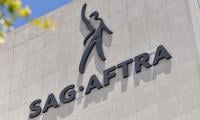Urea off-take down 8 percent, DAP sale up 11 percent in Jan-Aug
KARACHI: Urea off-take fell eight percent to 3.656 million tons in the first eight months of the current calendar year, while sale of diammonium phosphate (DAP) rose 11 percent to 1.063 million tons during the same period, a brokerage reported on Thursday.
Overall, fertiliser sales declined six percent to 5.67 million tons in the January-August period.
In August, total fertiliser off-takes sharply declined 47 percent year-on-year to 0.62 million tons.
Analyst Moazzam Akhtar at Taurus Securities said this was owing primarily to a significant 55 percent year-on-year decline in urea off-takes, and fall in DAP sales by four percent year-on-year.
“We expect demand of local fertilisers to post soft growth in CY18 amid demand from upcoming rabi season, and believe fertiliser manufacturers’ margins could be under pressure going forward given recent hike in gas prices,” Akhtar added.
The brokerage, citing data of the National Fertilizer Development Centre, said urea sales of Fauji Fertilizer (FFC), Engro Fertilizer (EFERT), Fauji Fertilizer Bin Qasim (FFBL) and Fatima sharply declined 49, 51, 57, 29 percent year-on-year, respectively. DAP sales of FFBL/FFC decreased 18 and 55 percent year-on-year, respectively, in August. Engro Fertilizer posted an impressive growth of 85 percent year-on-year in August.
In January-August, total DAP sales of EFERT grew 85 percent. However, FFC off-takes fell 55 percent, yet the company is still able to increase its market share in the DAP segment to 25 percent during the eight months as against 18 percent a year earlier.
In January-August, cumulative urea sales of FFC, EFERT and FFBL decreased two, eight and six percent, respectively, whereas in Fatima recorded a 30 percent decline in urea sales during the eight months.
Akhtar said inventory levels for urea continue to remain below strategic reserve level of 200,000 tons. “However a 52 percent month-on-month growth has arrested some of the concerns with inventory levels settling in at 131,000 tons.”
Last week, government decided to restore natural gas supplies to closed urea plants, brightening prospects of meeting peak urea demand of upcoming winter crops. For the next two months of supplies, federal government agreed to share cost of regasified liquefied natural gas, comprising one-third of total volume that will be blended with two third of locally produced gas. For the ensuing two months, government would share 50 percent of the RLNG price. The combined impact of the subsidy on gas price will be around Rs5 billion.
Out of three closed plants, Fatima fertiliser (old-Dawood) and Agritech have started producing urea once again.
Their combined production is expected to reach at 79,000 tons per month. In the next four months, it is estimated that both these manufacturing plants would produce some 300,000 tons of urea against the demand of 400,000 tons.
-
 King Charles’ Plans The Biggest Risk Of His Cancer-stricken Years And Its Not For Prince Harry
King Charles’ Plans The Biggest Risk Of His Cancer-stricken Years And Its Not For Prince Harry -
 Beyonce Hid Early Pregnancy While Delivering 'one Of Her Hardest Shows', Discloses Mom Tina Knowles
Beyonce Hid Early Pregnancy While Delivering 'one Of Her Hardest Shows', Discloses Mom Tina Knowles -
 Nicole Kidman And Keith Urban’s Monthly Salaries Disclosed Amid Divorce
Nicole Kidman And Keith Urban’s Monthly Salaries Disclosed Amid Divorce -
 Alix Earle 'tested The Waters' With Tom Brady At New Year Bash, Decodes Expert
Alix Earle 'tested The Waters' With Tom Brady At New Year Bash, Decodes Expert -
 Disney Announces Lead Actors For Live-action Tangled Remake
Disney Announces Lead Actors For Live-action Tangled Remake -
 Prince Harry’s Personal Desire Is Throwing A ‘provocative & Extreme Strain’ With Meghan Markle
Prince Harry’s Personal Desire Is Throwing A ‘provocative & Extreme Strain’ With Meghan Markle -
 Jennifer Garner Admits What Makes Coparenting With Ben Affleck 'hardest'
Jennifer Garner Admits What Makes Coparenting With Ben Affleck 'hardest' -
 Ethan Hawke Shares Next Film Will Become The 'greatest Ever'
Ethan Hawke Shares Next Film Will Become The 'greatest Ever' -
 Jimmy Kimmel Fires New Shots At US President Donald Trump
Jimmy Kimmel Fires New Shots At US President Donald Trump -
 Ethan Slater Draws Firm Line On Sharing Details About His Son
Ethan Slater Draws Firm Line On Sharing Details About His Son -
 Kate Middleton Is Going Against Old Guards And Camilla: ‘It’s Not Long Till She’s Queen’
Kate Middleton Is Going Against Old Guards And Camilla: ‘It’s Not Long Till She’s Queen’ -
 Drew Barrymore Shares Why Her 'sardines' Tattoo Is Deeply Personal
Drew Barrymore Shares Why Her 'sardines' Tattoo Is Deeply Personal -
 Jennifer Garner Gets Honest About Ben Affleck Split: 'True Partnership' Lost
Jennifer Garner Gets Honest About Ben Affleck Split: 'True Partnership' Lost -
 Joe Jonas 'getting Serious' With Tatiana Gabriela: Source
Joe Jonas 'getting Serious' With Tatiana Gabriela: Source -
 Kate Middleton's 44th Birthday Coincides With Significant Meghan Anniversary
Kate Middleton's 44th Birthday Coincides With Significant Meghan Anniversary -
 Queen Camilla Turns Territorial And Panicked Seeing Ruthlessness
Queen Camilla Turns Territorial And Panicked Seeing Ruthlessness



